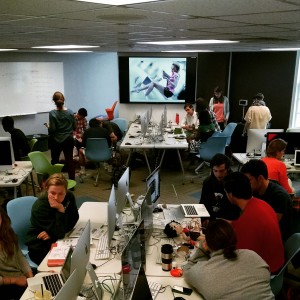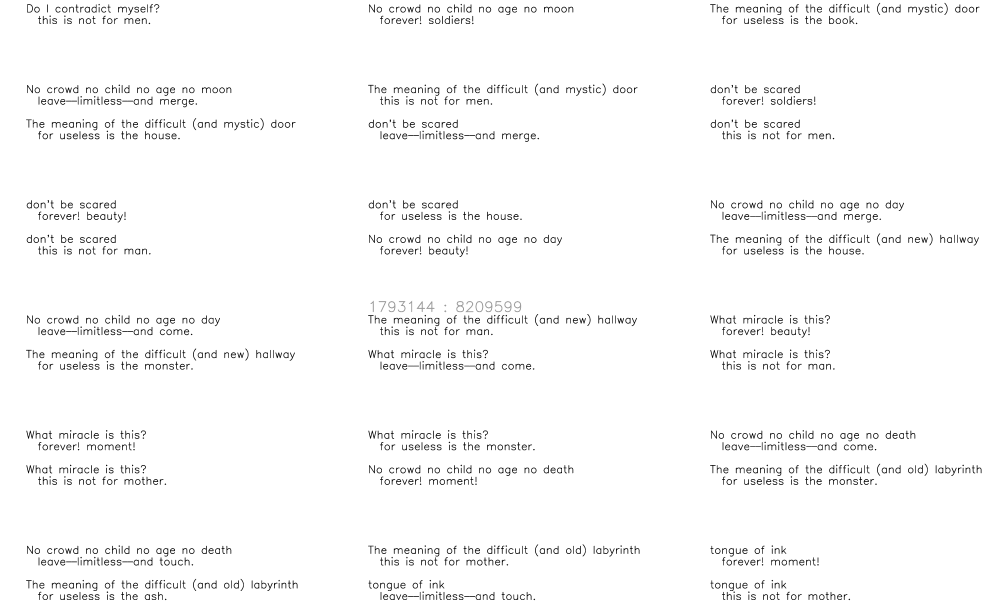A few weeks ago I wrote about studying digital culture through the lens of specific file types. In the fall I’m teaching DIG 101 (Introduction to Digital Studies)—an amorphous course that is part new media studies, part digital humanities, part science and technology studies. I was imagining spending a week on, say, something like GIFs as way to understand Internet culture. My question is, what other file types could be similarly productive to explore?
That short post generated great ideas in the comments, on Facebook, and on Twitter. To make things easier to find again (for me and others), here are just some of the file type ideas that bubbled to the surface:
As commentator Sam Popowich put it, “love it or hate it” PDFs are everywhere. Ryan Cordell pointed out that Lisa Gitelman has a chapter devoted to PDFs in Paper Knowledge. Gitelman is exactly the kind of scholar I want undergraduates to read. Clear, perceptive, uncovering seemingly archaic history and showing why it matters.
WAD
Quite a few people suggested WADs, composite files made up sounds, sprites, graphics, level information, and other digital assets for PC games. Doom popularized WADs, but PC games continue to use similar composite files. You can use tools like GCFScape to unpack these files, and they lend themselves to digital forensic lab work in the classroom. Every time I teach Gone Home, for example, students explore unpacked sound and graphic files. It’s an alternative way of experiencing the game. My own research digging to WADS to find misogynistic game developer comments could come into play here too.
JPG
At first I thought studying JPGs would be redundant if GIFs are already on the table. Allison Parrish and Jeff Thompson make a strong case for JPGs though: they organize information differently, compress differently, and of course, are glitchable. Like PDFs, their very ubiquity renders them invisible as file types, especially to students who have grown up carrying a camera with them at all times.
EXIF
Vika Zafrin and Tim Owens recommended EXIF, one of the few file types I hadn’t already considered as a possibility. Technically I guess EXIF is a metadata standard, not a file type per se, but the relationship between metadata and data is crucial to understand, and EXIF can get us there. Plus, we can talk about privacy, tracking, and my colleague Owen Mundy’s fantastic I Know Where Your Cat Lives project.
Stigmatized File Types
@TopLeftBrick mentioned NFO files and Finn Arne Jørgensen brought up .torrent files, both of which belong to the world of pirated games, software, and media. Jason Mittell similarly suggested another what I call stigmatized file type:
.FLV , a hidden file type that allows you to study YouTube.
— Jason Mittell (@jmittell) June 15, 2017
Before the rise of HTML5, YouTube videos were Flash files (FLV = Flash Video), and there were (and are) tricks to downloading these videos to watch offline. But it was a format you weren’t supposed to encounter; YouTube strove to make streaming seamless, hiding the actual video file. I would love to spend some time in DIG 101 studying all of these stigmatized file types, not so much to understand the technical features of the file formats themselves, but to better understand the cultural rules that influence the circulation of knowledge.
The Big Picture
The above list is certainly incomplete. And leaves off the file types that originally inspired this idea (MP3s, GIFs, HTML, and JSON). But it’s a great start. It’s also important to zoom out and see the big picture. To this end, Amelia Acker pointed me toward this surprisingly philosophical technical report from Microsoft Research: “What is a File?”
Indeed, what is a file and what do they mean is something we’ll be asking in DIG 101.


